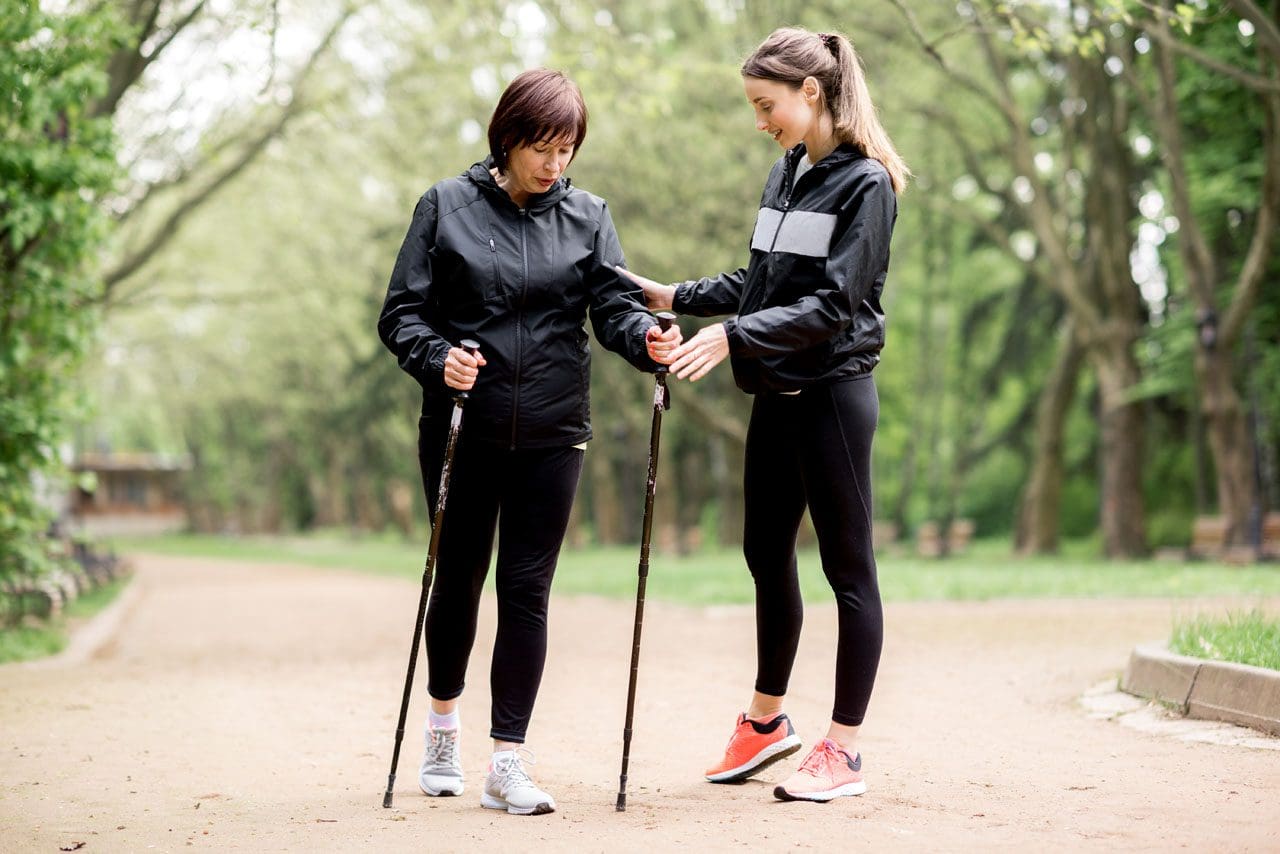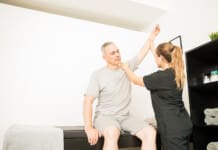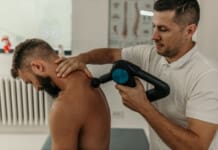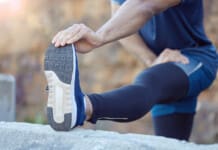Can incorporating walking help accomplish health goals for individuals trying to burn fat?

Table of Contents
Walking To Burn Calories and Fat
Walking has many wonderful benefits that include:
- Improving fitness
- Strengthening bones
- Easing joint pain
- Improving mental health
What to know
Taking it easy at first and steadily working on the basics can help individuals reach their health goals. Two keys to burning more fat when walking are:
- Walk with enough speed and intensity to burn fat for energy.
- The longer you walk, the more stored fat is burned instead of the sugars for quick bursts of exercise.
While any exercise can burn calories, brisk walking and other aerobic exercises are especially recommended for burning internal abdominal visceral fat. This fat contributes to the waistline and increases the risk of diabetes and heart disease. (Bairapareddy, K. C. et al., 2018)
Fat-Burning Zone
The American Heart Association categorizes brisk walking at a pace of 2.5 miles per hour as a moderate-intensity aerobic activity. (American Heart Association, 2024) The target heart rate for exercising at this level of intensity should be 50% to 70% of an individual’s maximum heart rate. For more vigorous activities, the heart rate should be about 70% to 85% of an individual’s maximum heart rate. (American Heart Association, 2021) Working out at a low to moderate intensity can help burn fat because the body uses stored fat as fuel compared with workouts of higher intensity that depend on carbohydrates. (Carey D. G. 2009)
The heart rate range for this zone varies by age. An age heart rate zone chart can help individuals find the right numbers. While exercising, take your pulse to check your heart rate. Heart rate apps and pulse monitors have been built into activity monitors and smartwatches. While exercising in this zone, breathing is heavier, and there is a feeling of increased exertion and sweating, but individuals should be able to carry on a conversation. (Centers for Disease Control and Prevention, 2022)
- Beginners should gradually build up walking time and speed.
- A beginner’s walking plan starts with 15 minutes daily, five days a week, and continued improvement in walking technique.
- Increase walking time by 5 minutes per session each week.
Increasing Walking Intensity
If the heart rate is still below 60% of the maximum heart rate, individuals need to intensify the workout to burn fat. Ways to do this include:
Adding Distance and Time
Make the walk longer to keep the body working harder and maintain a brisk pace. Adding additional minutes will burn additional stored fat. However, since not everyone has the time, there are other options.
Picking Up The Pace
Even for a short walk, make a goal to perform faster than normal, walking faster using correct posture, arm motion, and a powerful stride. It can help to time the walking route and challenge yourself to complete it faster each time. One study examined individuals walking 3.6 miles per hour, 4.1 mph, and 4.6 mph. Accelerating to 4.6 mph burned more than 50% more calories than going from 3.6 mph to 4.1 mph. (Schwarz, M. et al., 2006)
Adding Intervals
Intervals add intensity and also help increase the overall pace. The strategies above to walk faster incorporate intervals, where individuals increase their speed for a set distance or time, alternating with a slower pace. Research on individuals with diabetes found that those who did interval walking for four months lost six times as much weight as those who walked steadily. (Karstoft K. et al., 2013)
Adding Hills and/or Stairs
Incorporating hills or stair-climbing into some walking sessions helps you stay challenged and makes workouts more intense. If there is no access to outdoor hills or stairs, use a treadmill – start with a slight incline and work up to a steeper one, or get on a stair-stepping machine at the gym. There is no need to walk briskly on hills, as one study showed that walking slowly on an incline was an effective workout that didn’t cause knee joint stress, especially for obese individuals. (Haight, D. J. et al., 2014)
Switch Up Workouts
Mix up different walking workouts like intervals, short and fast walks, and long and moderate walks. Meditative, mindful walks also have stress-reducing benefits that help lower cortisol, which can contribute to weight gain. Individuals who can’t spend 45 continuous minutes walking make the most of the available time. Try and fit in two to four 15-minute walks at a brisk pace. It’s also recommended to include other types of moderate-intensity exercise and activities that include:
- Bicycle riding on level terrain
- Water aerobics
- Using an elliptical trainer
- Ballroom dancing
- Gardening
- Doubles tennis or pickleball
Challenge the body in new ways to burn fat, build muscle, and raise basal metabolic rate. With a boosted metabolism, the body burns more calories all day.
Sample Walking Workout
You can use a treadmill or walk outside. Make sure you have athletic shoes that are flat and flexible and have the proper support and cushioning for a long walk. Wear breathable clothing, which allows freedom of movement and wicks away sweat.
Warmup
- Start with 5 to 10 minutes of easy walking, increasing speed gradually.
- The warmup is important to burn stored blood sugar and deplete the ready energy stored in the muscles.
- This signals the body that a longer exercise session is underway.
- As a result, the body prepares to burn stored fat.
Pick Up The Speed
- To burn fat, the body needs to be in the fitness zone, with a heart rate of 60% to 70% of the maximum heart rate.
- Check heart rate every 10 minutes to stay in the zone.
Stay In The Fitness Zone
- For 30 to 50 minutes or more.
- If your heart rate dips, pick up the speed.
Cool Down
- End with 5 to 10 minutes at an easier pace to cool down.
Injury Medical Chiropractic and Functional Medicine Clinic
Using an integrated approach to treat and prevent injuries and chronic pain syndromes, improve flexibility, mobility, and agility, and help individuals return to normal activities, Injury Medical Chiropractic and Functional Medicine Clinic works with primary healthcare providers, trainers, and specialists to develop a personalized fitness program. Each case is different and requires reviewing individual medical history and physical examination to determine the proper training plan. Dr. Jimenez has partnered with top trainers, clinical specialists, medical researchers, and rehabilitation providers to provide the most effective treatments and fitness training plans.
Weight Loss Techniques
References
Bairapareddy, K. C., Maiya, A. G., Kumar, P., Nayak, K., Guddattu, V., & Nayak, V. (2018). Effect of aerobic exercise on echocardiographic epicardial adipose tissue thickness in overweight individuals. Diabetes, metabolic syndrome and obesity : targets and therapy, 11, 303–312. https://doi.org/10.2147/DMSO.S145862
American Heart Association. (2024). American Heart Association Recommendations for Physical Activity in Adults and Kids. https://www.heart.org/en/healthy-living/fitness/fitness-basics/aha-recs-for-physical-activity-in-adults
American Heart Association. (2021). Target Heart Rates Chart. https://www.heart.org/en/healthy-living/fitness/fitness-basics/target-heart-rates
Carey D. G. (2009). Quantifying differences in the “fat burning” zone and the aerobic zone: implications for training. Journal of strength and conditioning research, 23(7), 2090–2095. https://doi.org/10.1519/JSC.0b013e3181bac5c5
Centers for Disease Control and Prevention. (2022). Measuring Physical Activity Intensity. Retrieved from https://www.cdc.gov/physicalactivity/basics/measuring/index.html
Schwarz, M., Urhausen, A., Schwarz, L., Meyer, T., & Kindermann, W. (2006). Cardiocirculatory and metabolic responses at different walking intensities. British journal of sports medicine, 40(1), 64–67. https://doi.org/10.1136/bjsm.2005.020198
Karstoft, K., Winding, K., Knudsen, S. H., Nielsen, J. S., Thomsen, C., Pedersen, B. K., & Solomon, T. P. (2013). The effects of free-living interval-walking training on glycemic control, body composition, and physical fitness in type 2 diabetic patients: a randomized, controlled trial. Diabetes care, 36(2), 228–236. https://doi.org/10.2337/dc12-0658
Haight, D. J., Lerner, Z. F., Board, W. J., & Browning, R. C. (2014). A comparison of slow, uphill and fast, level walking on lower extremity biomechanics and tibiofemoral joint loading in obese and nonobese adults. Journal of orthopaedic research : official publication of the Orthopaedic Research Society, 32(2), 324–330. https://doi.org/10.1002/jor.22497
Professional Scope of Practice *
The information herein on "Burn More Fat with Walking: Effective Strategies Revealed" is not intended to replace a one-on-one relationship with a qualified health care professional or licensed physician and is not medical advice. We encourage you to make healthcare decisions based on your research and partnership with a qualified healthcare professional.
Blog Information & Scope Discussions
Welcome to El Paso's Premier Wellness and Injury Care Clinic & Wellness Blog, where Dr. Alex Jimenez, DC, FNP-C, a Multi-State board-certified Family Practice Nurse Practitioner (FNP-BC) and Chiropractor (DC), presents insights on how our multidisciplinary team is dedicated to holistic healing and personalized care. Our practice aligns with evidence-based treatment protocols inspired by integrative medicine principles, similar to those found on this site and our family practice-based chiromed.com site, focusing on restoring health naturally for patients of all ages.
Our areas of multidisciplinary practice include Wellness & Nutrition, Chronic Pain, Personal Injury, Auto Accident Care, Work Injuries, Back Injury, Low Back Pain, Neck Pain, Migraine Headaches, Sports Injuries, Severe Sciatica, Scoliosis, Complex Herniated Discs, Fibromyalgia, Chronic Pain, Complex Injuries, Stress Management, Functional Medicine Treatments, and in-scope care protocols.
Our information scope is multidisciplinary, focusing on musculoskeletal and physical medicine, wellness, contributing etiological viscerosomatic disturbances within clinical presentations, associated somato-visceral reflex clinical dynamics, subluxation complexes, sensitive health issues, and functional medicine articles, topics, and discussions.
We provide and present clinical collaboration with specialists from various disciplines. Each specialist is governed by their professional scope of practice and their jurisdiction of licensure. We use functional health & wellness protocols to treat and support care for musculoskeletal injuries or disorders.
Our videos, posts, topics, and insights address clinical matters and issues that are directly or indirectly related to our clinical scope of practice.
Our office has made a reasonable effort to provide supportive citations and has identified relevant research studies that support our posts. We provide copies of supporting research studies upon request to regulatory boards and the public.
We understand that we cover matters that require an additional explanation of how they may assist in a particular care plan or treatment protocol; therefore, to discuss the subject matter above further, please feel free to ask Dr. Alex Jimenez, DC, APRN, FNP-BC, or contact us at 915-850-0900.
We are here to help you and your family.
Blessings
Dr. Alex Jimenez DC, MSACP, APRN, FNP-BC*, CCST, IFMCP, CFMP, ATN
email: coach@elpasofunctionalmedicine.com
Multidisciplinary Licensing & Board Certifications:
Licensed as a Doctor of Chiropractic (DC) in Texas & New Mexico*
Texas DC License #: TX5807, Verified: TX5807
New Mexico DC License #: NM-DC2182, Verified: NM-DC2182
Licensed as a Multi-State Advanced Practice Registered Nurse (APRN*) in Texas & Multistate
Multistate Compact RN License by Endorsement (42 States)
Texas APRN License #: 1191402, Verified: 1191402 *
Florida APRN License #: 11043890, Verified: APRN11043890 *
* Prescriptive Authority Authorized
ANCC FNP-BC: Board Certified Nurse Practitioner*
Compact Status: Multi-State License: Authorized to Practice in 40 States*
Graduate with Honors: ICHS: MSN-FNP (Family Nurse Practitioner Program)
Degree Granted. Master's in Family Practice MSN Diploma (Cum Laude)
Dr. Alex Jimenez, DC, APRN, FNP-BC*, CFMP, IFMCP, ATN, CCST
My Digital Business Card
RN: Registered Nurse
APRNP: Advanced Practice Registered Nurse
FNP: Family Practice Specialization
DC: Doctor of Chiropractic
CFMP: Certified Functional Medicine Provider
IFMCP: Institute of Functional Medicine
CCST: Certified Chiropractic Spinal Trauma
ATN: Advanced Translational Neutrogenomics














